
One-day tour in ancient Mtskheta, Gori and Uplistsikhe
1 day
Instant confirmation
About this activity
Itinerary
This is a typical itinerary for this product
Stop At: Jvari Church, Mtskheta Georgia
Jvari Monastery is a sixth century Georgian Orthodox monastery near Mtskheta, eastern Georgia. it is listed as a World Heritage site by UNESCO. Jvari Monastery is located on the rocky hilltop at the confluence of the Mtkvari and Aragvi rivers, overlooking the town of Mtskheta, which was the capital of the Kingdom of Iberia before Tbilisi. Shortly after the adoption of Christianity, King Mirian III erected an enormous wooden cross on this site Isymbolizing the acceptance of Christianity by Georgians. In the 2nd half of the VI century Guaram, the ruler of Kartli, built a small church beside the Holy Cross.The temple attracts thousands of tourists because of its architecture, location and historical value.
Duration: 20 minutes
Stop At: Svetitskhoveli Cathedral, Arsukidze, Mtskheta 383400 Georgia
The Svetitskhoveli cathedral is the eastern orthodox Christian church located in the former capital of Mtskheta. A masterpiece of the Early Middle Ages, Svetitskhoveli is recognized by UNESCO as a World Heritage Site. It is currently the second largest church building in Georgia, after the Holy Trinity Cathedral. There is a religious legend, connected with this church origination, about Elioz, a citizen of Mtskheta, who found the Tunic of Jesus Christ in Jerusalem. Elioz's sister, Sidonia, died as soon as she touched the tunic. She was buried wrapped in it . Soon a big tree, cedar of Lebanan, grew on Sidonia's grave. When the ruler Mirian decided to build a temple on the place where the Tunic of the God was buried the cedar was cut down. They made seven columns from the tree and began to install them in the church. Six columns were in place but the seventh was not; it was hanging in mid-air. The Baptist of Georgia, St. Nino prayed all night long and then the column “without a touch of a human hand” froze on its place and … started shedding holy ointment. The miraculous chrism cured patients of heavy illnesses. Hence the temple's name – Svetitskhoveli; in Georgian it means “the Life-Giving Pillar”. The present structure was completed in 1029 by the medieval Georgian architect Arsukisdze.
Duration: 30 minutes
Stop At: Gori Fortress, Gori Georgia
Gori Fortress is a 13th century castle, situated on a hill above the city of Gori in the Shida Kartli region of eastern Georgia. It was captured by the Ottomans in the 16th century and then continually changed hands between the Turks, the Georgians, and the Persians. Much of the structure seen today dates from the 17th and 18th centuries and was significantly damaged by a 6.2 magnitude earthquake in 1920.
Duration: 30 minutes
Stop At: Stalin Museum, 32 Stalin Avenue, Gori Georgia
The Joseph Stalin Museum is a museum in Gori, Georgia dedicated to the life of Joseph Stalin, the leader of the Soviet Union, who was born in Gori. The Museum retains its Soviet-era characteristics.
Duration: 45 minutes
Stop At: Uplistsiche Cave Town, Kvakhvreli 15 km Eastwards to Town Gori, Gori Georgia
Uplistsikhe is identified by archaeologists as one of the oldest urban settlements in Georgia. Strategically located in the heartland of ancient kingdom of Kartli (or Iberia as it was known to the Classical authors), it emerged as a major political and religious center of the country. The town’s age and importance led medieval Georgian written tradition to ascribe its foundation to the mythical Uplos, son of Mtskhetos, and grandson of Kartlos. The history of Uplistsikhe goes back to the 2nd-1st millenniums B.C. In antiquity, the city was one of the most important centers of Kartli and in the middle Ages it stood on an important trade route that linked Byzantium with India and China. In 10th-16th centuries B.C. one of the strongest communities, residing on this territory used the natural caves for dwellings, later Uplistsikhe became one of the strongest political, cultural, religious and economic centers and the royal residence.
After the establishment of Christianity as the state religion, in the 30s of 4th century, the town began to decline. During Mongol invasions in 12th century it was badly damaged and soon in the 13th century, the hordes of Genghis Khan's son Khulagu finally destroyed it. The five thousand inhabitants of Uplistsikhe perished and life ended forever in the fortress.Today various kinds of halls, rooms, and buildings made in different epochs still survive. Archaeological findings such as ritual things and jewels made of gold, silver, Iron, bones, stone and clay sculptures shed light to the history of the town.
Duration: 1 hour
Read more
Show less
This is a typical itinerary for this product
Stop At: Jvari Church, Mtskheta Georgia
Jvari Monastery is a sixth century Georgian Orthodox monastery near Mtskheta, eastern Georgia. it is listed as a World Heritage site by UNESCO. Jvari Monastery is located on the rocky hilltop at the confluence of the Mtkvari and Aragvi rivers, overlooking the town of Mtskheta, which was the capital of the Kingdom of Iberia before Tbilisi. Shortly after the adoption of Christianity, King Mirian III erected an enormous wooden cross on this site Isymbolizing the acceptance of Christianity by Georgians. In the 2nd half of the VI century Guaram, the ruler of Kartli, built a small church beside the Holy Cross.The temple attracts thousands of tourists because of its architecture, location and historical value.
Duration: 20 minutes
Stop At: Svetitskhoveli Cathedral, Arsukidze, Mtskheta 383400 Georgia
The Svetitskhoveli cathedral is the eastern orthodox Christian church located in the former capital of Mtskheta. A masterpiece of the Early Middle Ages, Svetitskhoveli is recognized by UNESCO as a World Heritage Site. It is currently the second largest church building in Georgia, after the Holy Trinity Cathedral. There is a religious legend, connected with this church origination, about Elioz, a citizen of Mtskheta, who found the Tunic of Jesus Christ in Jerusalem. Elioz's sister, Sidonia, died as soon as she touched the tunic. She was buried wrapped in it . Soon a big tree, cedar of Lebanan, grew on Sidonia's grave. When the ruler Mirian decided to build a temple on the place where the Tunic of the God was buried the cedar was cut down. They made seven columns from the tree and began to install them in the church. Six columns were in place but the seventh was not; it was hanging in mid-air. The Baptist of Georgia, St. Nino prayed all night long and then the column “without a touch of a human hand” froze on its place and … started shedding holy ointment. The miraculous chrism cured patients of heavy illnesses. Hence the temple's name – Svetitskhoveli; in Georgian it means “the Life-Giving Pillar”. The present structure was completed in 1029 by the medieval Georgian architect Arsukisdze.
Duration: 30 minutes
Stop At: Gori Fortress, Gori Georgia
Gori Fortress is a 13th century castle, situated on a hill above the city of Gori in the Shida Kartli region of eastern Georgia. It was captured by the Ottomans in the 16th century and then continually changed hands between the Turks, the Georgians, and the Persians. Much of the structure seen today dates from the 17th and 18th centuries and was significantly damaged by a 6.2 magnitude earthquake in 1920.
Duration: 30 minutes
Stop At: Stalin Museum, 32 Stalin Avenue, Gori Georgia
The Joseph Stalin Museum is a museum in Gori, Georgia dedicated to the life of Joseph Stalin, the leader of the Soviet Union, who was born in Gori. The Museum retains its Soviet-era characteristics.
Duration: 45 minutes
Stop At: Uplistsiche Cave Town, Kvakhvreli 15 km Eastwards to Town Gori, Gori Georgia
Uplistsikhe is identified by archaeologists as one of the oldest urban settlements in Georgia. Strategically located in the heartland of ancient kingdom of Kartli (or Iberia as it was known to the Classical authors), it emerged as a major political and religious center of the country. The town’s age and importance led medieval Georgian written tradition to ascribe its foundation to the mythical Uplos, son of Mtskhetos, and grandson of Kartlos. The history of Uplistsikhe goes back to the 2nd-1st millenniums B.C. In antiquity, the city was one of the most important centers of Kartli and in the middle Ages it stood on an important trade route that linked Byzantium with India and China. In 10th-16th centuries B.C. one of the strongest communities, residing on this territory used the natural caves for dwellings, later Uplistsikhe became one of the strongest political, cultural, religious and economic centers and the royal residence.
After the establishment of Christianity as the state religion, in the 30s of 4th century, the town began to decline. During Mongol invasions in 12th century it was badly damaged and soon in the 13th century, the hordes of Genghis Khan's son Khulagu finally destroyed it. The five thousand inhabitants of Uplistsikhe perished and life ended forever in the fortress.Today various kinds of halls, rooms, and buildings made in different epochs still survive. Archaeological findings such as ritual things and jewels made of gold, silver, Iron, bones, stone and clay sculptures shed light to the history of the town.
Duration: 1 hour
Included
- Air-conditioned vehicle
- Bottled water
- Fuel surcharge
- Professional guide service
Not included
- Admission fee to Stalin museum and Uplistsikhe
- Lunch
- Entry/Admission - Stalin Museum
- Entry/Admission - Uplistsiche Cave Town
Additional
- Confirmation will be received at time of booking
- Not wheelchair accessible
- Near public transportation
- Infants must sit on laps
- Infant seats available
- Most travelers can participate
- This experience requires a minimum number of travelers. If it’s canceled because the minimum isn’t met, you’ll be offered a different date/experience or a full refund
- This tour/activity will have a maximum of 20 travelers
Features
Tourism
85%
Cultural
75%
Original
20%
You may also like









 See all 32 Collections
See all 32 Collections
Click to discover other experiences
See all
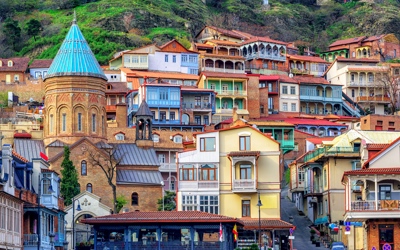
Collections
Old Tbilisi
12 Activities
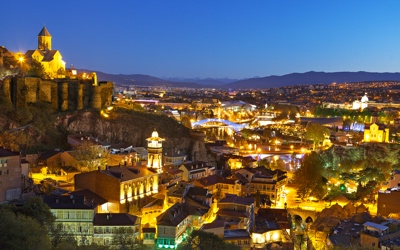
Collections
By Night
8 Activities
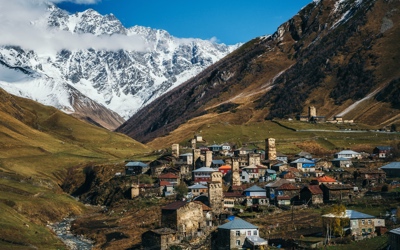
Collections
Georgia Tours
127 Activities

Collections
Sports & Leisure
10 Activities
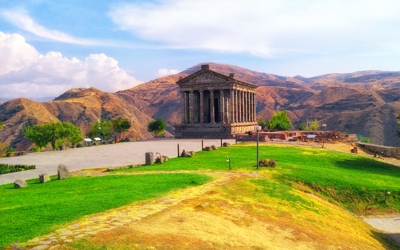
Collections
Armenia
16 Activities
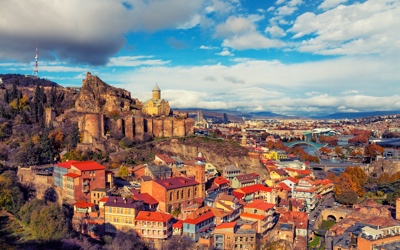
Collections
City Tour
82 Activities

Collections
Quad & Bike
6 Activities
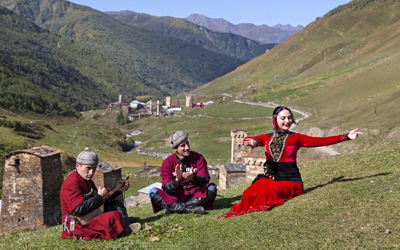
Collections
Original
39 Activities
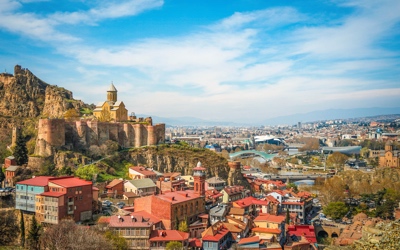
Collections
Walking Tour
45 Activities
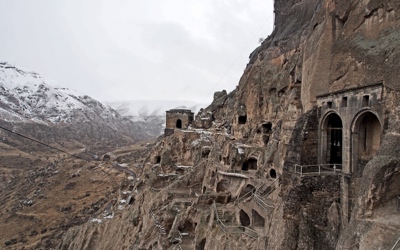
Collections
Vardzia
25 Activities

